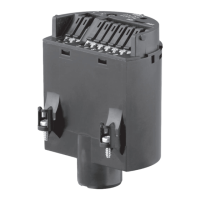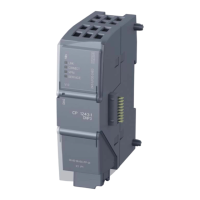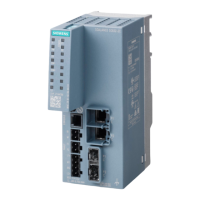Page EN-24 SITRANS LVS100/200 – INSTRUCTION MANUAL 7ML19985FT63
mmmmm
English
The output current can indicate weak vibration amplitude with the diagnosis setting D
ON. If the diagnosis is set to D OFF, the output will be either 8 mA or 16 mA depending on
high or low level settings.
If the diagnosis is set to D ON, the output will change from 16 to 20 mA and from 8 to 6 mA
if the vibration is weak. This output can be passed to an external 4 to 20 mA output. There
is an internal delay of 10 seconds before the change happens, so that the external output
does not indicate a weak vibration when the vibration is stopped and started during
normal measurement operation.
Buildup Detection (8/16 mA or 4 to 20 mA version)
With the 4 to 20 mA setting, you can recognize material buildup on the fork using a PLC or
data logger.
In this mode, the Diagnostic setting has no influence. The LED showing signal output is
off.
20 mA: The fork is clean.
<20 mA and >12/12.5 mA: The vibration amplitude is decreased by the material buildup.
<12/12.5 mA and >7/8 mA: This range indicates a weak vibration. The internal LED
showing diagnosis begins blinking to indicate a weak signal. If you are using a PLC to
evaluate the echo, delay the response time to this indicator for approximately 10 seconds.
A hysteresis of 0.5 mA (between 12 and 12.5 mA) is recommended.
7/8 mA: This point indicates that the fork is mostly encrusted.
6 mA: This point indicates that the fork is fully encrusted.
increasing material buildup
Amplitude is 100%
Amplitude is 0%
Amplitude is 100%
Amplitude is 0%
With standard sensitivity setting
With decreased sensitivity setting
6 mA
7/8 mA
12/12.5 mA
20 mA
output current
s
t
a
n
d
a
r
d
s
e
n
s
i
t
i
v
i
t
y
d
e
c
r
e
a
s
e
d
s
e
n
s
i
t
i
v
i
t
y
Vibration damping by material

